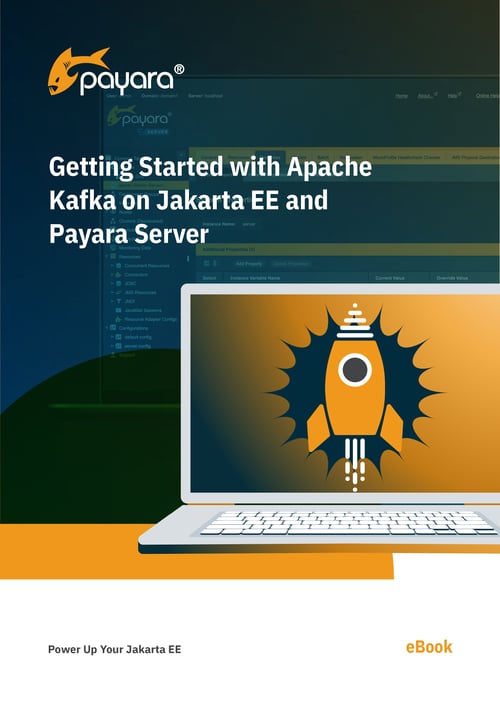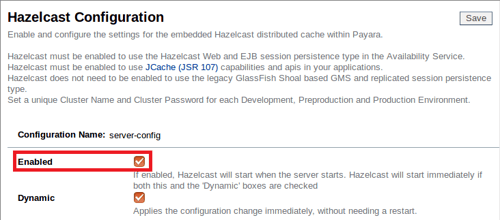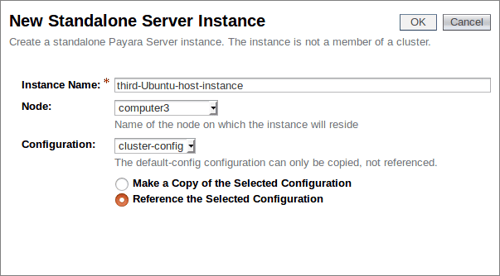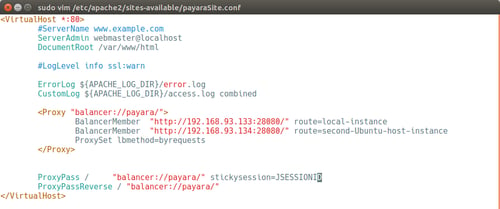Posts tagged Apache
Getting Started with Apache Kafka on Jakarta EE and Payara Server
Published on 18 Apr 2024
by Chiara Civardi
Topics:
Apache,
Payara Server,
Jakarta EE
|
0 Comments
When dealing with complex distributed systems, decoupled, asynchronous communications may be more suited to support the exchange of information between different parts of a system, or even completely different systems. In effect, this decoupling makes it possible for different parts of a system to interact without being directly connected, enhancing scalability and fault tolerance. It is possible to set up such communications through a messaging platform like Apache Kafka and design highly scalable applications.
Our new eBook - available to download here - discusses how to use Apache Kafka for Jakarta EE Platforms that use Payara Server.
Connecting to Instaclustr Managed PostgreSQL® and Apache Kafka® from Payara Cloud
Published on 18 Mar 2024
by Paul Brebner
Topics:
Apache,
Payara Cloud,
Jakarta EE,
PostgreSQL®
|
0 Comments
This article provides a brief introduction to using Instaclustr’s managed PostgreSQL Database and Apache Kafka from Payara Cloud. It was created to assist entrants in the upcomingPayara Hackathon (you can still sign up!) spin-up and configure some potentially useful Instaclustr technologies forJakarta EEapplications.
Fundamentos de Payara Server Parte 6 - Creando un cluster dinámico con conmutación por fallas en Payara Server con Hazelcast
Published on 29 May 2018
by Michael Ranaldo
Topics:
Hazelcast,
Payara Server Basics,
Clustering,
How-to,
GlassFish basics,
JVM,
Apache,
Payara Server Basics - Series,
Developer,
Spanish language
|
1 Comment
Avanzando más nuestra serie de blogs de introducción, esta entrada mostrará como puedes escalar de forma dinámica tu cluster, y como Payara Server maneja la conmutación por fallas entre miembros del cluster.
See here for the original version in English language.
La conmutación por fallas es la habilidad de continuar proporcionando acceso a nuestro sitio web o aplicación en el caso de que un servidor falle. Es una parte importante de un servicio que goza de alta disponibilidad, cuyo objetivo es minimizar los tiempos de inactividad a lo largo de tu infraestructura de servicios.
How to Secure Payara Server with Apache
Published on 04 May 2018
by Jonathan Coustick
Topics:
Apache,
Payara Server
|
2 Comments
In a previous blog of this series we set up Apache httpd to forward traffic to Payara Server. However, this only covers forwarding HTTP and not HTTPS. This blog will demonstrate how to secure Payara Server with Apache over HTTPS on Ubuntu.
Payara Server Basics Part 7 - Creating a simple Payara Server Cluster in Windows with DCOM
Published on 08 Dec 2017
by Michael Ranaldo
Topics:
Hazelcast,
Payara Server Basics,
Clustering,
How-to,
GlassFish basics,
Scalability,
JVM,
Apache,
Payara Server Basics - Series,
Developer
|
3 Comments
Taking our introductory series onwards, this blog will look at how you set up a simple Payara Server cluster on Windows using the native remote control protocol, DCOM. We will set up two instances on Windows 10, controlled by a third Domain Administration Server (DAS) instance on Windows 7 via DCOM, and cluster them together using Hazelcast. Finally, we will deploy our trusty clusterjsp application to demonstrate how the data is being shared across our instances.
Payara Server Basics Part 6 - Dynamic Clustering and Failover on Payara Server with Hazelcast
Published on 10 Nov 2017
by Michael Ranaldo
Topics:
Hazelcast,
Payara Server Basics,
Clustering,
How-to,
GlassFish basics,
JVM,
Apache,
Payara Server Basics - Series,
Developer
|
3 Comments
Further developing our introductory blog series, this post will look at how you can dynamically scale your cluster, and how Payara Server handles failover between cluster members.
Failover is the ability to continue to provide access to your website or application in the event of a server failing. It is an important part of high availability hosting, which aims to minimise downtime across your server infrastructure.
Payara Server Basics Part 5 - Configuring Sticky Sessions for Payara Server with Apache Web Server
Published on 01 Nov 2017
by Michael Ranaldo
Topics:
Payara Server Basics,
Clustering,
How-to,
GlassFish basics,
JVM,
Apache,
Payara Server Basics - Series,
Developer
|
0 Comments
This article continues our introductory blog series on setting up a simple cluster with Payara Server, carrying straight on from our last blog where we set up load balancer on our cluster.
By clustering our Payara Servers together and balancing traffic between them with Apache Web Server we keep the benefits of having our application accessible from a single URL and gain the resilience and expansion prospects from having our application deployed across multiple instances.
Fundamentos de Payara Server Parte 5 - Configurando Sesiones Persistentes para Payara Server con Servidor Web Apache
Published on 01 Nov 2017
by Michael Ranaldo
Topics:
Payara Server Basics,
Clustering,
How-to,
GlassFish basics,
JVM,
Apache,
Payara Server Basics - Series,
Developer,
Spanish language
|
0 Comments
Este artículo continúa nuestra serie de blogs de introducción para configurar un cluster con Payara Server, continuando desde nuestro último articulo donde configuramos un balanceador de carga para nuestro cluster.
Payara Server Basics Part 4 - Load Balancing Across Payara Server Instances with Apache Web Server
Published on 20 Jul 2017
by Michael Ranaldo
Topics:
Payara Server Basics,
Clustering,
How-to,
GlassFish basics,
Scalability,
Apache,
Payara Server Basics - Series,
Developer
|
3 Comments
Continuing our introductory blog series, this blog will demonstrate how to add load balancing capability to Apache Web Server and forward to our simple Payara Server cluster.
A load balancer can redirect requests to multiple instances, primarily for the purpose of distributing incoming requests between cluster members based on pre-determined rules. This could be a simple "round-robin" algorithm, where the workload is distributed to each instance in turn, or a weighted algorithm where requests are delivered based on a pre-determined weight for each cluster member.
Fundamentos de Payara Server Parte 4 - Balanceo de Carga a través de Instancias de Payara Server con Servidor Web Apache
Published on 20 Jul 2017
by Michael Ranaldo
Topics:
Payara Server Basics,
Clustering,
How-to,
GlassFish basics,
Scalability,
Apache,
Payara Server Basics - Series,
Developer,
Spanish language
|
0 Comments
Continuando con nuestra serie de blogs de introducción, este blog va a demostrar como añadir la capacidades de balanceo de carga a un Servidor Web Apache y asi re-enviar las peticiones HTTP a nuestro cluster de Payara Server.








